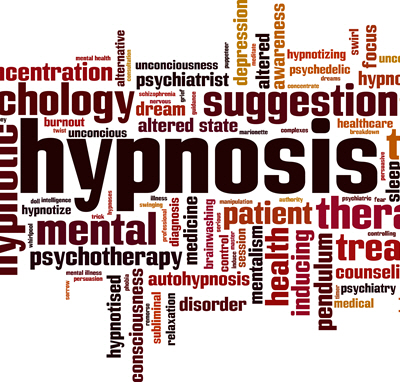 EFT (Emotionally Focused Couples Therapy)
EFT (Emotionally Focused Couples Therapy)
EFT helps address the core questions about our most important relationships: Do I matter to my partner? Will he/she be there for me when I need them most? Do I feel secure enough in this relationship to be my full self?
Questions about emotional bonds and security in a relationship are typically the root causes of fights between couples. When we fear that the answer to the above questions is “no” or even “maybe,” we feel isolated and alone, as though we are fighting for survival itself.
And fight we will… or withdraw.
EFT is a highly researched, effective, and evidence-based treatment focusing on the establishment of emotional bonds between partners. It assumes that most relational problems arise from a disruption in this bond.
EFT helps partners learn to be open and trusting with each other and to more effectively reach out to each other.
Terri Wright is the only therapist in Mississippi and the Mid-South certified in EFT, and all the therapists in our group have advanced training in EFT.
 Gottman Couples Method
Gottman Couples Method
When it comes to relationships, John Gottman is one of the most widely recognized and respected researchers. Rather than focusing on why relationships do not work, he was the first to ask what makes them work.
Over the past 40 years, he has developed a “blueprint” (known as The Sound Relationship House) for happy, healthy relationships. This is good news for couples with feelings of hopelessness and loss.
The Sound Relationship House blueprint provides couples with direction and goals. The therapist and the couple work together to strengthen a couple’s emotional trust and commitment to one another.
 EMDR (Eye Movement Desensitization and Reprocessing)
EMDR (Eye Movement Desensitization and Reprocessing)
During an EMDR session, patterns in the brain appear similar to what occurs during the REM (Rapid Eye Movement) phase during natural sleep. This is sometimes known as the dreaming phase of sleep.
EMDR helps a person see disturbing or negative thoughts or images in a new and less distressing way. It can literally change how your brain thinks about something.
EMDR helps people heal from the symptoms and emotional distress of disturbing life events. It is particularly helpful for diagnosing PTSD as well as other forms of trauma. Evidence suggests that EMDR is helpful for treating depression and anxiety.
 Cognitive Behavioral Therapy (CBT)
Cognitive Behavioral Therapy (CBT)
CBT is based on the idea that our thoughts and how we think about ourselves and/or a situation determine how we feel and behave, rather than external things, people, or circumstances. In other words, negative thoughts create negative feelings. This causes negative behavior.
The benefit of focusing on how we think is that it’s possible to change how we feel and behave, even if circumstances, situations, or other people do not change.
 Role Theory
Role Theory
Role theory is the idea that people define roles for themselves and others based on their life experiences and what they learn based on those experiences. People develop a set of expectations as to the behavior displayed and roles assumed by themselves and others.
The most basic and recognized roles within families are: The Hero, The Mascot, The Lost or Silent Child, The Scapegoat, and The Caretaker.
In role theory, the idea of roles is explored within the family system. Then the connection is made as to how our lives are impacted by expansion of those same roles outside our families.
The recognition of roles that we have and that others have is always an essential element of marital/couples counseling.
 Hypnosis/Hypnotherapy
Hypnosis/Hypnotherapy
Hypnosis and hypnotherapy have a wide range of uses. Unfortunately, these forms of therapy are negatively portrayed by entertainers and the movie industry.
There are many misconceptions of hypnotherapy, such as the idea that a hypnotized person will not remember anything that is said or done.
There is a difference between hypnosis and hypnotherapy. In hypnosis, the goal is to offer suggestions to modify specific behavior. It is very helpful in dealing with issues such as general anxiety, panic attacks, pain management, and exam anxiety. It is also an effective tool for weight loss and smoking cessation.
During hypnosis, the only “job” the person being hypnotized has is to lie in a comfortable position in a relaxed state and take in the positive suggestions being made.
In hypnotherapy, the person being hypnotized verbally interacts with the therapist to uncover underlying causes and feelings for the problem or issue at hand. This is often done by going back to the time in life where the problem began.
 Schema Theory
Schema Theory
A schema is defined as a specific, broad, and consistent pattern of thought that helps us organize and interpret information. It’s really a big word for generalizing.
Generalizations, which all humans make, can be beneficial, because they help our brains process large amounts of information. However, they also can be harmful, because they can cause our brains to exclude or delete information.
Deleting information allows us to both stereotype and keep believing something, even though valid information disputes the belief. Those beliefs can be about a situation, other people, or more often ourselves.
Negative beliefs about one’s self that are developed in childhood are often carried over into adulthood. Persistent negative beliefs can create a great deal of distress in all areas of life. For example, if someone has what we call a schema (generalized thought pattern) of failure, that person will feel like a failure in all aspects of life.
You can see how debilitating and distressing this could be. The idea of incorporating schema theory into therapy is to identify these negative and generalized thoughts and beliefs – and adopt new and more productive thoughts and beliefs.
Ready for Connection?
Call us at (662) 202-7332 to connect.

